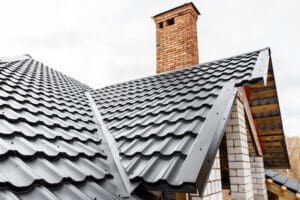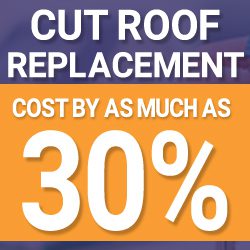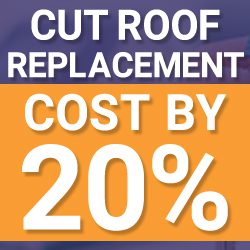
The Impact of Local Climate on Roofing Choices
Selecting the appropriate roofing material for your home isn’t just about aesthetics or cost; it’s largely about suitability for the local climate. Different climates pose varied challenges for roofing materials, from heavy rainfalls and high humidity to intense sun and gusty winds. This guide will delve into how various climatic conditions impact the best roofing material choices, ensuring homeowners make informed decisions that are both durable and efficient.
Understanding the Importance of Climate-Appropriate Roofing
Before diving into specific climates and their recommended roofing materials, it’s vital to grasp why climate plays a crucial role:
- Durability & Longevity: A roof is an investment. Choosing a material that’s ill-suited to the local climate can result in frequent repairs or even premature replacement.
- Energy Efficiency: Roofs play a significant role in a home’s insulation. A climate-appropriate roof can help regulate indoor temperatures, reducing the strain on HVAC systems and decreasing energy bills.
- Protection & Safety: In areas prone to specific weather events, like hurricanes or hailstorms, the right roofing can offer added protection and safety to the residents.
Why Climate-Appropriate Roofing Matters
When homeowners think about the elements their homes need to withstand, the roof is essentially the first line of defense. Making a climate-appropriate roofing choice is paramount for a variety of reasons:
Protection
Your roof shelters you from the elements, whether it’s rain, sun, snow, or wind. The right material will offer maximum protection specific to your regional challenges.
Cost Efficiency
Over time, a roof not suited to its environment can incur higher maintenance costs. For instance, a material not designed to handle heavy snowfall can accumulate ice dams, leading to potential damage and costly repairs.
Energy Savings
Proper roofing can act as an effective insulator. In hot climates, reflective roofs can deter heat, reducing air conditioning needs. Conversely, in colder regions, the right roof can trap warmth, decreasing heating expenses.
Aesthetic Longevity
The right roofing material will maintain its appearance over the years, boosting curb appeal and property value. Inappropriate choices may show signs of wear, fade, or even corrode more rapidly.

How to Determine If You’ve Made the Right Choice
- Reduced Utility Bills: If you notice energy savings, especially in the peak of summer or winter, your roof may be playing a part in insulating your home effectively.
- Minimal Maintenance: A climate-suited roof will require less frequent repairs and maintenance.
- Consistent Aesthetics: Your roof should maintain its color, shape, and overall look over the years without rapid degradation.
Common Roofing Materials
- Asphalt Shingles: These are among the most popular roofing materials due to their cost-effectiveness and ease of installation. They come in various colors and styles, and some are designed with added resistance to algae growth, which is beneficial in humid climates.
- Metal Roofing: Durable and resistant to extreme weather conditions, metal roofs are both reflective and insulative. They come in a variety of types like steel, aluminum, and copper. With proper coatings, they can be tailored for different climate needs.
- Slate Tiles: Known for their luxurious appearance and durability, slate roofs can last for decades. They’re especially good for regions with fluctuating temperatures as they resist both heat and frost well.
- Clay and Concrete Tiles: Common in warmer climates, these tiles reflect away sunlight and prevent heat absorption. They’re durable and can handle the elements well, but they’re heavy, which means the house structure needs to be robust enough to support them.
- Wood Shingles and Shakes: These offer a rustic and natural appearance. While they have natural insulating properties, they’re more suitable for drier climates unless treated for moisture resistance.
The climate of your region should be a primary factor when choosing a roofing material. Making the right decision not only ensures protection but also brings about long-term savings and peace of mind. Consulting with roofing professionals who have a deep understanding of both materials and local climates will provide homeowners with the best guidance.
Coastal Climates
Characteristics: High salt content in the air, frequent rains, humidity, and the possibility of hurricanes.
Recommended Materials:
- Metal Roofing: Resistant to salt spray corrosion, metal roofs are durable and can withstand the gusty winds of coastal regions. They also reflect solar heat, which can help regulate indoor temperatures.
- Slate & Tile: These materials can withstand the challenges of both wind and rain, making them ideal choices for coastal homes.
Avoid: Wood shingles or untreated materials that can corrode or deteriorate quickly due to salt and moisture.


Desert Climates
Characteristics: Intense sun, high temperatures during the day, cool nights, and minimal rainfall.
Recommended Materials:
- Tile Roofing: Clay, concrete, and slate tiles are great for desert climates. They resist the harsh UV rays while providing excellent insulation, helping homes remain cool even in soaring temperatures.
- Metal: Light-colored metal roofs can reflect sun rays, reducing heat absorption and improving energy efficiency.
Avoid: Dark roofs which can become incredibly hot and increase the home’s temperature.
Tropical Climates
Characteristics: High temperatures year-round, heavy rainfall, high humidity, and potential for tropical storms.
Recommended Materials:
- Metal Roofing: A popular choice due to its resistance to both rust and high winds. When treated and coated, metal can resist the corrosive effects of constant humidity and rainfall.
- Concrete Tiles: These are durable and can handle both the heat and the torrential downpours common in tropical regions.
Avoid: Asphalt shingles which can degrade faster in constant heat and high UV exposure.
Cold & Snow-Prone Climates
Characteristics: Low temperatures, heavy snowfall, and ice.
Recommended Materials:
- Metal Roofing: Snow slides off metal roofs more easily, preventing ice dams. They’re also excellent for insulation when combined with adequate underlayment.
- Slate Roofing: Its density and durability make slate an excellent choice for cold climates, as it can withstand heavy snowfalls and resist water absorption.
Avoid: Materials that might absorb water and freeze, leading to cracks or breaks.



Finding the Right Roof for Your Climate
When homeowners understand the pivotal role climate plays in the longevity and efficiency of roofing materials, they can make choices that not only add aesthetic appeal but also bring value in the form of durability, safety, and energy savings.
Energy Efficiency and Climate
Roofing is not just about shelter; it’s also about comfort and energy savings. Depending on the climate you live in, your roof can be a significant factor in reducing your energy bills.
- Cool Roofs for Hot Climates: In areas with intense sun, a cool roof, designed to reflect more sunlight and absorb less heat than a standard roof, can be beneficial. They can be made of highly reflective types of paint, a sheet covering, or reflective tiles or shingles. Not only do they reduce energy bills by decreasing air conditioning needs, but they also decrease the temperature of the roof, which may extend its life.
- Insulated Roofs for Cold Climates: In colder climates, insulation is key. An adequately insulated roof can prevent the escape of heat from homes, reducing heating costs significantly. Modern roofing materials come with higher R-values (a measure of insulation), ensuring minimal heat loss.
Sustainability in Roofing Choices
Climate considerations are also leading homeowners to think more about sustainability. After all, a home that’s in harmony with its environment tends to be more energy-efficient and comfortable.
- Green or Living Roofs: Particularly in urban areas, green roofs are becoming popular. These roofs are covered with vegetation, helping with insulation, managing rainwater, and even providing habitats for wildlife. They act as an insulator, reducing the need for heating or cooling.
- Recycled Roofing Materials: For those in varied climates, recycled shingles made from waste materials, like rubber, plastic, or wood fiber, can be an excellent option. They look fantastic, offer durable protection, and are environmentally friendly.
Advanced Roofing Technologies
Thanks to advancements in technology, there are now roofing solutions specifically designed for various climatic challenges:
- Solar Tiles: Advanced solar collectors integrate seamlessly into existing shingles, capturing the sun’s energy to power homes. These are particularly beneficial in sunny climates, where homeowners can capitalize on solar power.
- Rubberized Asphalt: This is a type of roofing material that can be advantageous in both hot and cold climates. In hotter regions, it reflects heat, keeping interiors cool. In colder areas, it offers robust protection against ice dams.
- Roofing with Built-in Gutters: For areas with heavy rainfall, integrated gutter systems ensure that water is effectively channeled away from the home, preventing issues like flooding or water damage.
While the choice of roofing material remains crucial, it’s clear that advancements in technology, a move towards sustainable living, and the need for energy efficiency are driving innovative roofing solutions tailored for every climate. As homeowners navigate these options, it’s essential to align one’s choices with both the immediate environment and broader ecological concerns.


Maintenance and Longevity Based on Climate
Beyond just the initial installation, the climate will significantly influence the long-term maintenance and longevity of a roof. Making the right choice based on your local climate can ensure fewer repairs and a longer lifespan for your roofing material.
- Snow and Ice Accumulation: For colder areas prone to snow and ice, choosing a roof with a steeper pitch can help in shedding off the snow, reducing the weight and stress on the structure. Furthermore, materials that resist ice damming, where melted snow refreezes at the roof’s edge, are crucial. This can prevent water from backing up under the roofing and causing leaks or structural damage.
- Resistance to Sun and Heat: In sunnier, hotter climates, roofs can deteriorate faster due to UV radiation and extreme temperatures. Materials that are UV resistant and can handle expansion and contraction due to temperature changes will fare better.
- High Winds and Storm Resilience: For areas that experience high winds or are prone to storms, the roof’s anchoring system becomes crucial. In such zones, it’s essential to have roofing materials that are tested and rated for wind resistance.
- Salt and Moisture Resistance: Coastal areas present another challenge. The salt in the air can corrode certain roofing materials faster. Therefore, materials resistant to salt spray and high humidity are preferable.
Incorporating Roofing Technology for Climate Adaptability
Roofing technology has also evolved to provide real-time solutions for homeowners:
- Roof Monitoring Systems: Modern roofs can be integrated with sensors and monitoring systems. These systems can provide real-time data about the roof’s condition, detect leaks, and monitor the roof’s temperature. In areas with extreme climate conditions, such monitoring can be invaluable for early problem detection.
- Cool Roof Coatings: For roofs not initially designed for heat resistance, cool roof coatings can be applied to reflect more sunlight and absorb less heat, much like cool roofs.
- Advanced Water Barriers: In wet climates, traditional underlayment can be supplemented or replaced with advanced water barriers that offer better protection against moisture intrusion.
Making the Right Choice for Your Climate and Needs
In essence, there’s no one-size-fits-all solution when it comes to roofing. The plethora of options available means homeowners can tailor their choice based on specific needs, aesthetic preferences, budget, and of course, the climate. Taking the time to research and understand these variables ensures not only a roof that stands up to the weather but also one that can provide comfort and savings in the long run.


Improving the Performance of a Mismatched Roof
Homeowners often inherit the existing roofing material when purchasing a property. If it turns out that the roofing material isn’t the best choice for the local climate, it’s not necessarily an immediate cause for alarm. There are several steps that can be taken to improve its performance and maintain its integrity without a full replacement.
Additional Coatings and Sealants
For roofs that face excessive heat and UV radiation, reflective coatings can be applied. These coatings reflect sunlight and prevent the roof from absorbing excessive heat. For roofs in wetter climates, water-resistant sealants can help ward off potential leaks and reduce moisture damage.
Proper Insulation and Ventilation
The underside of the roof plays as crucial a role as the exterior. Ensuring that the attic or the space below the roof is well-insulated can help maintain a balanced temperature. Ventilation helps in the effective expulsion of moist, warm air, reducing the chances of rot, mold, and structural damage.
Regular Maintenance and Inspection
Regardless of the roofing material, regular maintenance is essential. In areas prone to snow, for example, removing the snow from a roof not designed for cold climates can prevent damage. Similarly, in wind-prone areas, checking for loose or damaged shingles or tiles can help in preemptive replacement before significant issues arise.
Gutter System Enhancement
In regions with heavy rainfall, enhancing the gutter system can prevent water overflow, which might damage the roof and the walls of the house. A well-maintained gutter system will direct water away from the structure, protecting the foundation as well.
Supplementary Barriers
For coastal homes with roofs not designed for salt and humidity, installing a salt-resistant barrier or underlayment can add an extra layer of protection. This barrier can help prolong the roof’s lifespan by preventing the corrosive effects of salt.
Landscaping as a Shield
Strategically placed trees and shrubs can act as barriers against elements like wind and sun. For instance, planting tall, sturdy trees on the windward side of a property can significantly reduce wind impact on a roof.
While having the ideal roof for your climate is certainly beneficial, it’s not the end of the world if the existing roof doesn’t perfectly match the region’s challenges. With thoughtful modifications and regular maintenance, homeowners can significantly enhance their roof’s performance and extend its lifespan.
It’s worth noting that while these strategies can help in the short to medium term, it may still be economical and practical in the long run to consider a roof replacement, especially if the current material is nearing the end of its lifespan or if repair and maintenance costs are escalating.



Roof Overlays: An Alternative Solution
If you’re not entirely ready for a complete roof replacement, another option to consider is a roof overlay. This involves adding a new layer of roofing over the existing one, rather than tearing off the old roof entirely.
Benefits of a Roof Overlay
1. Cost-Effective: Roof overlays are generally less expensive than a full roof replacement since there’s no need to remove and dispose of old roofing material.
2. Time-Saving: Since the old roof remains intact, the process is quicker, allowing homeowners to see results in a shorter timeframe.
3. Environmental Impact: By leaving the old roofing material in place, you reduce waste that ends up in landfills.
4. Additional Protection: The extra layer can provide additional insulation and protection against the elements.
Considerations Before Opting for an Overlay
1. Weight Concerns: Adding another layer of roofing increases the weight on the home’s structure. Ensure your home can handle this additional weight without compromising its structural integrity.
2. Local Building Codes: Some localities might have restrictions or codes that prevent multiple roofing layers. Always check local regulations before proceeding.
3. Existing Damage: If the existing roof has damage like water leaks, mold, or rot, it’s essential to address these issues before adding a new layer. An overlay might not be suitable in such cases, as it could merely be masking deeper problems.
4. Warranty Implications: Some roofing material manufacturers might not offer the same warranty duration or coverage for overlays as they would for a full replacement. It’s crucial to confirm this aspect before making a decision.



Personalized Solutions and Professional Guidance
If you’re unsure about the best course of action for your roof in relation to your region’s climate, it’s always advisable to consult with roofing professionals. They can conduct a thorough inspection, provide insights about the current state of your roof, and offer tailored solutions. Furthermore, technological advancements in the roofing industry, such as thermal imaging, can detect underlying problems, ensuring that homeowners make informed decisions based on accurate information.
If you’re considering a new roof or a roof replacement, understanding how these factors interact in your specific location can provide both short-term and long-term benefits. When you’re ready, our team is here to offer guidance and provide reliable quotes to ensure your home is not just beautiful but also energy-efficient and sustainable.




Leave a Reply